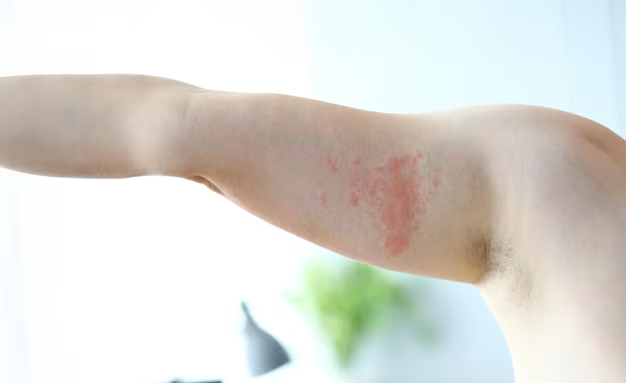Understanding How Shingles Begin: What You Need to Know
Shingles, officially known as herpes zoster, is not just a random skin rash; it's an unwelcome visitor that can cause unexpected pain and discomfort. If you or someone you know has ever faced shingles, you're probably curious about how it starts and why it affects some people more than others. Let's explore this mysterious condition, unravel how it begins, and discover some practical insights you should know.
What Is Shingles?
First and foremost, shingles is caused by the varicella-zoster virus, the same virus responsible for chickenpox. After recovering from chickenpox, the virus doesn't leave your body—instead, it lies dormant in your nerve tissues. Years, or even decades later, something might trigger the reactivation of this virus, leading to shingles.
Dormant Virus: The Sleeping Intruder
- Varicella-Zoster Virus: This virus never fully leaves the body after a chickenpox infection. Instead, it remains inactive in the body's nerve cells, particularly in the dorsal root ganglions near your spinal cord.
- Reactivation: Various factors can reactivate the virus, resulting in shingles.
How Do Shingles Start?
Unraveling the mystery of how shingles begin involves exploring several key triggers and risk factors that can awaken the dormant virus, causing a painful and sometimes debilitating rash.
Common Triggers and Risk Factors
- Weakened Immune System: As years go by, our immune system might not be as robust, making it easier for dormant viruses to reactivate. This is why shingles is more common in older adults.
- Stress and Emotional Trauma: High-stress situations or emotional shocks can weaken the immune response, increasing your risk of a shingles outbreak.
- Underlying Health Conditions: Diseases like cancer or HIV, or treatments like chemotherapy, can lower body defenses significantly.
- Certain Medications: Immunosuppressive drugs used in organ transplants or treatments for autoimmune diseases may increase susceptibility.
Typical Symptoms and Early Warning Signs
Shingles usually begins with an uncomfortable sensation even before any rash appears. Here’s what you might want to watch out for:
- Tingling or Burning: Initial sensations might include itching or a tingling feeling in a localized area on one side of the body.
- Localized Pain: Pain often precedes the rash and can range from mild to severe.
- Rash Development: Within a few days, a rash can develop on the affected area, transforming into fluid-filled blisters that eventually scab over.
- Other Symptoms: Fatigue, fever, and headache are common as well, echoing viral flu-like symptoms.
Who Is Most at Risk?
Understanding the demographic most affected by shingles is crucial in grasping how and why it starts for some individuals.
Age: The Primary Influencer
- Older Adults: People over 50 are more susceptible as their immune systems naturally weaken with age.
Health and Lifestyle Influences
- Compromised Health: Individuals with weakened immune systems due to chronic diseases or lifestyle factors (such as smoking or excessive alcohol use) face a higher risk.
- History of Chickenpox: If you've had chickenpox, even as a child, you have a potential risk of developing shingles later in life.
- Genetic Predisposition: Some factors are unavoidable, and genetics play a part in susceptibility to certain illnesses, including shingles.
Can Shingles Spread?
While you can’t catch shingles from someone suffering from it, there's a twist to be aware of— contact with someone with a current shingles outbreak can indeed transmit the varicella-zoster virus, leading to chickenpox if you’ve never been infected.
Preventive Measures
- Avoid Direct Contact: Keep away from open sores, especially if you’ve never had chickenpox or are immunocompromised.
- Vaccination: A shingles vaccine is available and recommended, particularly for those over 50 or at higher risk.
Managing and Mitigating Shingles
Knowing how to handle shingles can ease the journey if an outbreak occurs.
Symptom Relief and Recovery Aids
While specific treatments should be discussed with health professionals, here are general steps to manage discomfort:
- Cool Compresses: Applying wet, cool cloths to the rash can help alleviate pain and itching.
- Soothing Baths: Oatmeal baths can soothe irritated skin and calm the itching.
- Pain Management: Over-the-counter pain relievers may provide some relief, but always consult healthcare providers for any medication concerns.
Lifestyle Adjustments
Maintaining a healthy lifestyle may reduce the risk of shingles:
- Balanced Diet: Nutrition plays a significant role in keeping your immune system strong.
- Stress Management: Techniques such as meditation, exercise, and adequate sleep can help mitigate overall stress levels and promote wellness.
Key Misconceptions About Shingles
Misunderstandings can spread misinformation. Let’s tackle some common myths and set the record straight.
Shingles Only Affects the Elderly
While it is more common in older adults, anyone who has had chickenpox can potentially develop shingles, even younger individuals.
You Can Only Get Shingles Once
Though less common, it is possible to experience shingles more than once.
Closing Insight: Living with Awareness
While shingles can seem unpredictable and uncomfortable, understanding its origins, symptoms, and preventive measures can empower you to manage the condition or support loved ones who might be affected. Staying informed adds a layer of defense beyond medicine—equipping you with the knowledge to live confidently and healthily.
Shingles Summary Table
| Key Insights 🗝️ | Quick Takeaways 📝 |
|---|---|
| Cause of Shingles | Reactivation of the varicella-zoster virus, dormant post-chickenpox |
| Risk Factors | Age (50+), weakened immune system, stress, specific medications |
| Initial Symptoms | Tingling, pain, flu-like symptoms, rash development |
| Preventive Measures | Vaccination, avoiding contact with open sores, maintaining healthy lifestyle |
| Spread Considerations | Direct contact can cause chickenpox, not shingles, in a non-immune person |
| Management Tips | Cool compresses, oatmeal baths, OTC pain relief |
Through understanding and awareness, shingles doesn’t have to catch you off guard. Stay informed, take proactive steps, and tackle myths with facts. The more you know, the better equipped you are to face whatever health challenges come your way. 🛡️
